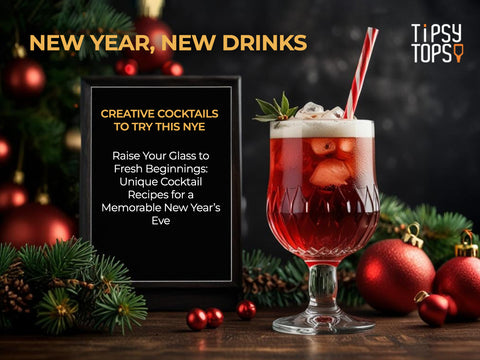When you’re pouring a glass of wine, cracking open a cold beer, or mixing up a cocktail, one factor plays a crucial role in determining your drinking experience: alcohol percentage. Also known as ABV (Alcohol By Volume), this number directly impacts the strength, flavor, and even the health effects of your drink. Understanding alcohol percentages is essential for making informed decisions, whether you’re looking for a light beverage to relax or a stronger drink to savor slowly.
In this comprehensive guide, we’ll break down everything you need to know about alcohol percentage, from how it’s calculated to how it varies across different types of beverages. By the end, you’ll be equipped to confidently interpret ABV labels and choose drinks that match your preferences and tolerance.
What Is Alcohol Percentage (ABV)?
Alcohol percentage, often referred to as ABV (Alcohol By Volume), is a measure of how much alcohol is contained in a given volume of a beverage. It’s expressed as a percentage, indicating the ratio of alcohol to the total liquid volume. For example, a bottle of wine with 12% ABV contains 12 milliliters of pure alcohol in every 100 milliliters of liquid.
Why ABV Matters:
- Strength: Drinks with higher ABV pack more punch and are typically consumed in smaller quantities.
- Flavor: Alcohol contributes to the taste, aroma, and body of a beverage.
- Effects: ABV determines how quickly alcohol can affect your body and how much you should consume responsibly.
How Is Alcohol Percentage Calculated?
The ABV of a beverage is determined during the fermentation or distillation process. Here’s a simplified explanation:
- Fermentation: During fermentation, yeast converts sugar into alcohol and carbon dioxide. The initial sugar content of the liquid determines how much alcohol will be produced.
- Measurement: Brewers and winemakers use tools like a hydrometer or refractometer to measure the sugar levels before and after fermentation. The difference in these measurements is used to calculate ABV.
- Distillation (for spirits): For distilled beverages, the alcohol content is concentrated through the distillation process, resulting in much higher ABV levels compared to fermented drinks.
Alcohol Percentage Across Different Types of Alcoholic Beverages
Now that you know what ABV means, let’s explore how alcohol percentages vary across different types of beverages.
Beer
-
Typical ABV Range: 3% to 12%
Beer is one of the most widely consumed alcoholic beverages, and its ABV varies significantly depending on the style:- Light Beer: 3% to 4% ABV (e.g., Bud Light)
- Standard Beer: 4% to 6% ABV (e.g., Heineken, Carlsberg)
- Craft and Specialty Beers: 7% to 12% ABV (e.g., IPAs, stouts, barleywines)
Wine
-
Typical ABV Range: 10% to 15%
Wine is another popular option, with its alcohol content influenced by grape variety, fermentation length, and style: - Sparkling Wine: 10% to 12% ABV (e.g., Prosecco, Champagne)
- White Wine: 11% to 13% ABV (e.g., Sauvignon Blanc, Chardonnay)
- Red Wine: 12% to 15% ABV (e.g., Merlot, Cabernet Sauvignon)
- Fortified Wine: 17% to 20% ABV (e.g., Port, Sherry)
Spirits
-
Typical ABV Range: 35% to 50% (or higher for overproof spirits)
Spirits undergo distillation, resulting in higher alcohol content compared to beer and wine: - Vodka: 37.5% to 40% ABV (e.g., Absolut, Smirnoff)
- Gin: 37.5% to 47% ABV (e.g., Tanqueray, Bombay Sapphire)
- Rum: 37.5% to 50% ABV (e.g., Bacardi, Captain Morgan)
- Whiskey: 40% to 50% ABV (e.g., Jack Daniel’s, Glenfiddich, Jameson)
- Tequila: 35% to 50% ABV (e.g., Patrón, Jose Cuervo)
- Overproof Spirits: 50% to 75% ABV (e.g., Everclear, Bacardi 151)
Soju
-
Typical ABV Range: 16% to 25%
Soju, a popular Korean spirit, has a relatively lower ABV compared to other spirits, making it a versatile choice for casual drinking or cocktails.
Aperitifs and Digestifs
-
Typical ABV Range: 10% to 30%
These drinks are designed to be sipped before or after a meal: - Aperitifs: 10% to 20% ABV (e.g., Aperol, Campari)
- Digestifs: 20% to 30% ABV (e.g., Fernet, Amaro)
Liqueurs
-
Typical ABV Range: 15% to 30%
Liqueurs are sweetened spirits infused with flavors, such as fruits, herbs, or spices: - Examples: Baileys Irish Cream (17% ABV), Cointreau (40% ABV), Kahlúa (20% ABV)
How Alcohol Percentage Affects Your Drinking Experience
The ABV of your drink plays a significant role in shaping your experience. Here’s how:
1. Intensity of Effects
Higher ABV drinks are absorbed into the bloodstream more quickly, leading to stronger and faster effects. A 40% ABV shot of vodka will hit harder and faster than a 4% ABV beer.
2. Serving Size
Beverages with higher ABV are typically served in smaller portions. For example:
- Beer: 330ml or 500ml servings
- Wine: 150ml glass
- Spirits: 30ml shot
3. Flavor and Aroma
Alcohol contributes to the body, aroma, and flavor of a drink. Higher ABV drinks often have more pronounced flavors but can also be harsh if not well-balanced.
4. Caloric Content
Alcohol is calorie-dense, with higher ABV drinks containing more calories. For example:
- 4% Beer: ~150 calories per 330ml
- 12% Wine: ~120 calories per 150ml
- 40% Whiskey: ~97 calories per 30ml
How to Choose the Right ABV for You
Selecting the ideal alcohol percentage depends on your preferences, tolerance, and the occasion. Here are some tips:
For Social Gatherings:
- Opt for moderate ABV drinks (e.g., 4-6% beers, 12% wines) to enjoy the evening without feeling overwhelmed.
For Relaxation:
- A higher ABV drink (e.g., 15% wine or 40% whiskey) is great for sipping and unwinding.
For Experimentation:
- Try liqueurs, aperitifs, or cocktails with balanced ABV to explore different flavors.
For Low-Alcohol Options:
- Go for light beers (3-4%), spritzers, or non-alcoholic alternatives.
Alcohol Percentage FAQs
1. Is higher ABV always better?
Not necessarily. A higher ABV doesn’t equate to better quality. It depends on the balance of flavors and the drinker’s preferences.
2. Can you mix drinks with different ABVs?
Yes, but be mindful of their combined effects. Mixing a strong cocktail with beer or wine can lead to faster intoxication.
3. How can I reduce the effects of alcohol?
- Drink water between alcoholic beverages.
- Eat before and during drinking.
- Opt for lower ABV options.
4. Are all wines and beers the same strength?
No, ABV varies widely by style, brand, and brewing or winemaking process.
Conclusion
Understanding alcohol percentage (ABV) is a vital part of making informed and responsible drinking choices. By knowing how ABV affects strength, flavor, and serving size, you can select beverages that align with your preferences and tolerance. Whether you’re enjoying a light beer, a glass of wine, or a neat pour of whiskey, the ABV on the label provides valuable insights into your drinking experience.
Ready to explore the world of alcohol with confidence? Visit Tipsy Topsy and browse our curated collection of wines, beers, spirits, and more, all labeled with their ABV to help you make the perfect choice.
Cheers to enjoying your drinks responsibly and savoring every sip!


